Bounded on either side by mass extinctions, and well known for its strange creatures, the Triassic was a time of transition, hardship, and evolutionary experimentation.
The first geologic period of the Mesozoic Era (informally called “The Age of Reptiles” or “The Age of Dinosaurs”) is the Triassic, spanning some 50.5 million years, beginning 251.9 million years ago and ending 201.4 million years ago. Bounded on either side by mass extinctions, and well known for its strange creatures, the Triassic was a time of transition, hardship, and evolutionary experimentation. It is perhaps best known as the period during which the first dinosaurs appeared, but it also saw the appearance of the first marine reptiles, pterosaurs, and crocodylomorphs, as well as the appearance and disappearance of many other animal groups, some rather unlike anything before or since! The Triassic also saw the decline of the synapsids and temnospondyl amphibians, which had ruled the preceding Permian Period, and their replacement by reptiles as the ecologically dominant group of land vertebrates.
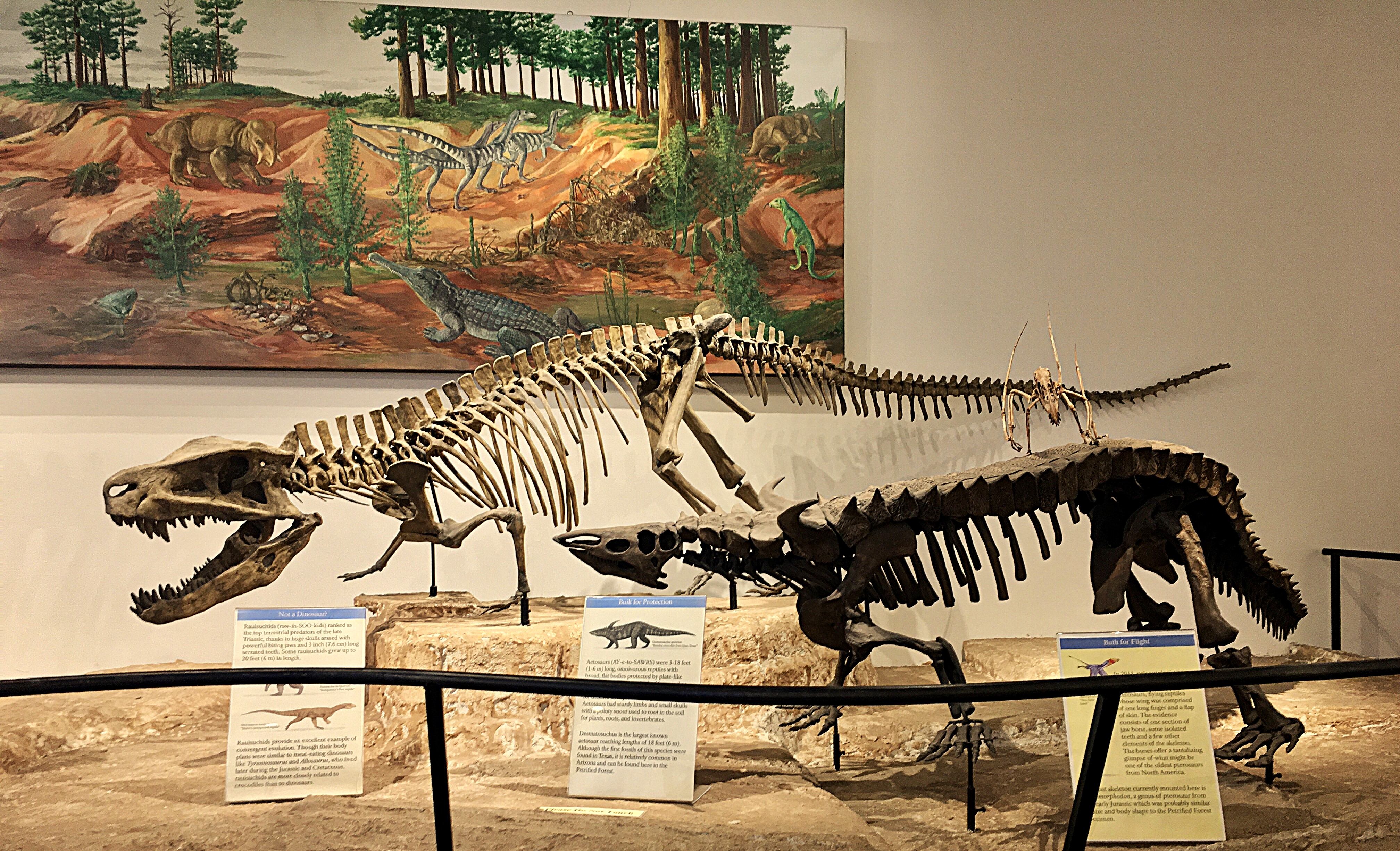
Why is it called the Triassic?
The Triassic is named after the Greek word trias, meaning triad. This was chosen by German geologist Friedrich August von Alberti, and he named it after a triad of Triassic rock widespread in southern Germany. These are the Buntsandstein (the lowest/oldest rock unit; 252-242 Ma; colorful sandstone), the Muschelkalk (the middle rock unit; 242-237 Ma; fossiliferous limestone), and the Keuper (the uppermost/youngest; 237-201.4 Ma; colored clay). These three rock units span the entirety of the Triassic Period and roughly correspond to the three epochs of the Triassic (Early, Middle, Late), though the Buntsandstein does extend into the first part of the Middle Triassic and the Muschelkalk only occupies the last part of the Middle Triassic.
How is the Triassic divided?
The Triassic Period is divided into three epochs, the Early, Middle, and Late Triassic. These epochs are further subdivided into ages or stages. The Early Triassic spanned from 251.9-247.2 million years ago and contains the Induan (251.9-251.2 Ma) and Olenekian (251.2-247.2 Ma) Stages.
The Middle Triassic spanned from 247.2-237 million years ago and contains the Anisian (247.2-242 Ma) and Ladinian (242-237 Ma) Stages.
The Late Triassic spanned from 237-201.4 million years ago, by far the longest Triassic epoch, accounting for over two-thirds of the Triassic Period. It contains three stages: the Carnian (237-227 Ma), the Norian (227-208.5 Ma), and the Rhaetian (208.5-201.4 Ma).
Visit this link to view the official GSA geologic timescale: https://www.geosociety.org/GSA/gsa/timescale/home.aspx
What was Earth like in the Triassic?
During the Triassic Period, all of the continents were united in a single supercontinent called Pangea, meaning “all earth”. Surrounding Pangea was a global ocean called Panthalassa, meaning “all ocean”.
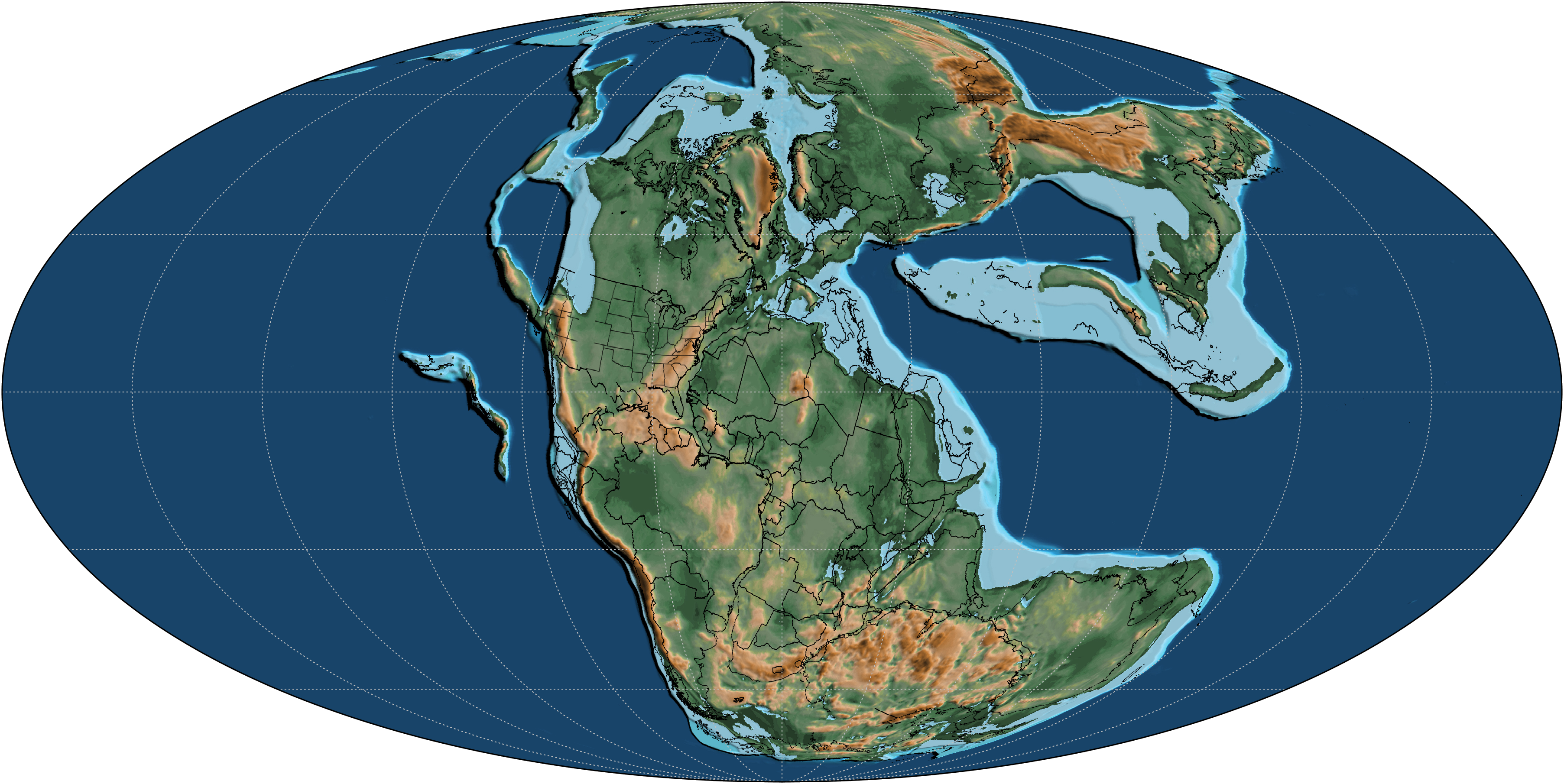
The climate during the Triassic was significantly warmer than the present day, particularly in the Early Triassic, which took place during and immediately after the Siberian Traps mega-eruption, which was the cause of the End Permian Extinction Event or “Great Dying”, the largest mass extinction of all time. The greenhouse gases released from this volcanic event superheated the planet. The Triassic cooled as time went on, but it remained a perpetual greenhouse climate with no permanent ice at the poles. In addition to being hot, most regions were also very arid and strongly seasonal. This was in part due to Pangea itself. The sheer size of the landmass meant that most of Earth’s land was far from any coast, resulting in dry climates across most of the continent. However, some areas did receive strong seasonal monsoons (“Pangean megamonsoons”), and toward the poles, the climate was moister and more temperate. Additionally, there were times during the Triassic when the climate apparently switched to be much wetter. The most notable of these was the Carnian Pluvial Event from 234–232 million years ago, which led to major evolutionary diversification, and likely helped start the dinosaurs on their rise to power.
Oxygen levels in the atmosphere were comparably low in the Triassic relative to modern levels, with some studies suggesting that oxygen levels in the Triassic atmosphere may have been less than 12%. For comparison, the modern atmosphere is about 21% oxygen. This may have actually benefitted the dinosaurs, which had highly efficient unidirectional respiration. In a low oxygen environment, they likely would have had an edge over many other animals with less efficient respiration, including the synapsids (mammal relatives).
What lived in the Triassic?
The Triassic was a time of great evolutionary experimentation. Some 90% of all species had been wiped out at the end of the Permian, so the survivors had a rather clean slate of a world to evolve in, and many evolved into strange forms never seen before or since. The beginning of the Triassic saw largely synapsid dominated ecosystems, but as the Triassic progressed, reptiles came to dominate, until by the end of the period, all synapsids except for the cynodonts (which would give rise to true mammals), had gone extinct. Temnospondyl amphibians dominated aquatic habitats early on, but also found themselves being outcompeted by reptiles, and by the end of the Triassic they too had begun to dwindle. Other amphibians were having a better time, as the Triassic is notable as the time period from which the earliest fossils of the ancestors of modern amphibians (Lissamphibia) are known, though the group may have actually originated long before the Triassic, possibly from Temnospondyl ancestors in the Late Carboniferous.
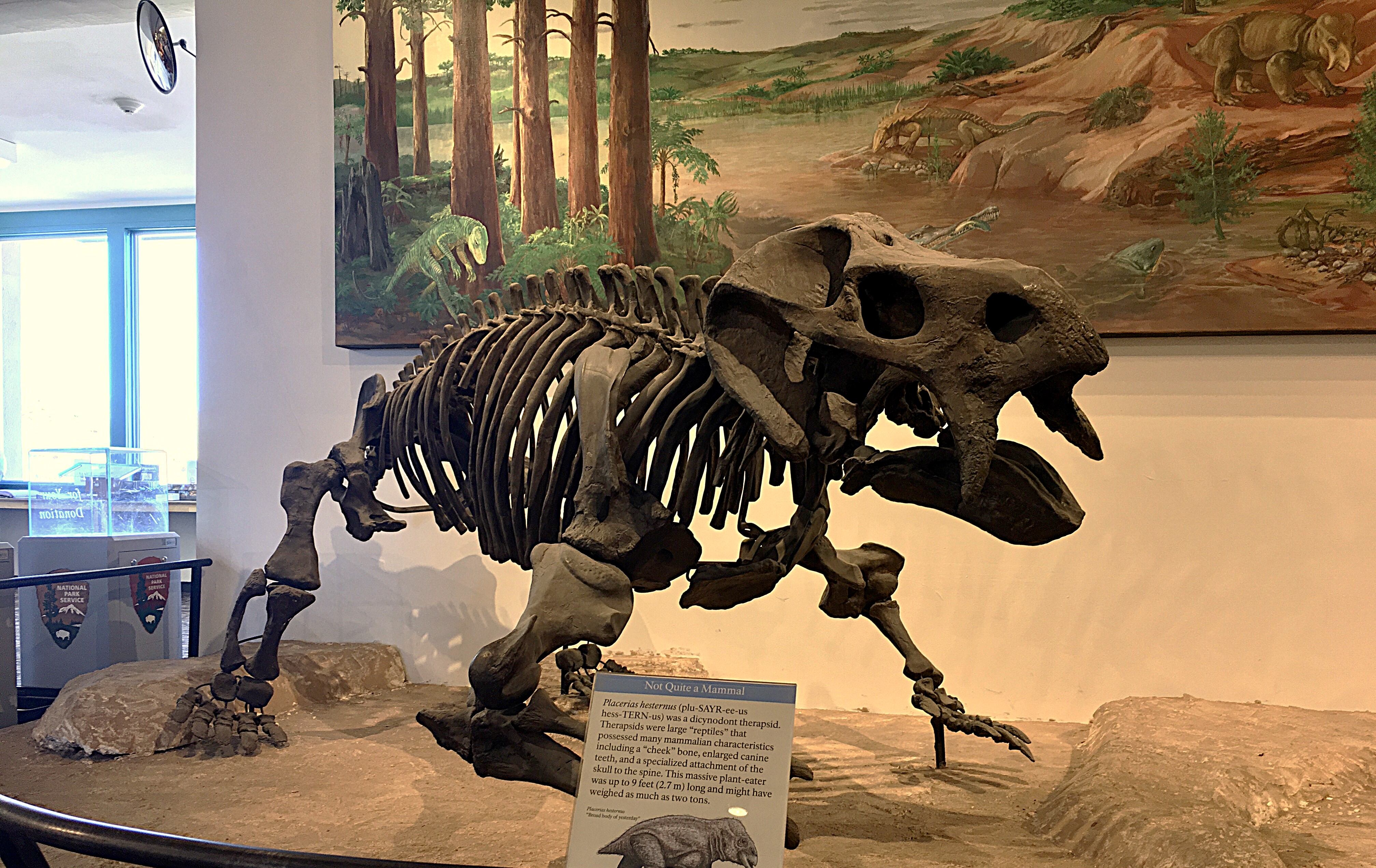
The sea was also full of great evolutionary experiments. First on the scene were the ichthyosaurs, appearing almost as soon as the Triassic began. Their exact origin and relationship to other reptiles is uncertain, but they were undoubtedly one of the most successful groups of marine reptiles during the Mesozoic. They also achieved their largest sizes during the Triassic with some shastasaurid ichthyosaurs like Shonisaurus and Ichthyotitan rivalling in size all but the largest of today’s whales. Another group of marine reptiles were the sauropterygians, which included the strange and varied placodonts, as well the ancestors of the plesiosaurs, the most successful group of sauropterygians and the only lineage to survive beyond the Triassic.
Plants also underwent important developments. Conifers, cycads, and bennettitales were highly successful. Successful trees included ancestors of monkey-puzzles and ginkgoes. There were no angiosperms (flowering plants) as of yet, those wouldn’t evolve until the Cretaceous, so the forests of the Triassic were unlike most modern forests. Perhaps most significantly, no angiosperms meant no grass, so other plants provided ground cover, including mosses, clubmosses, horsetails, and most significantly, ferns.
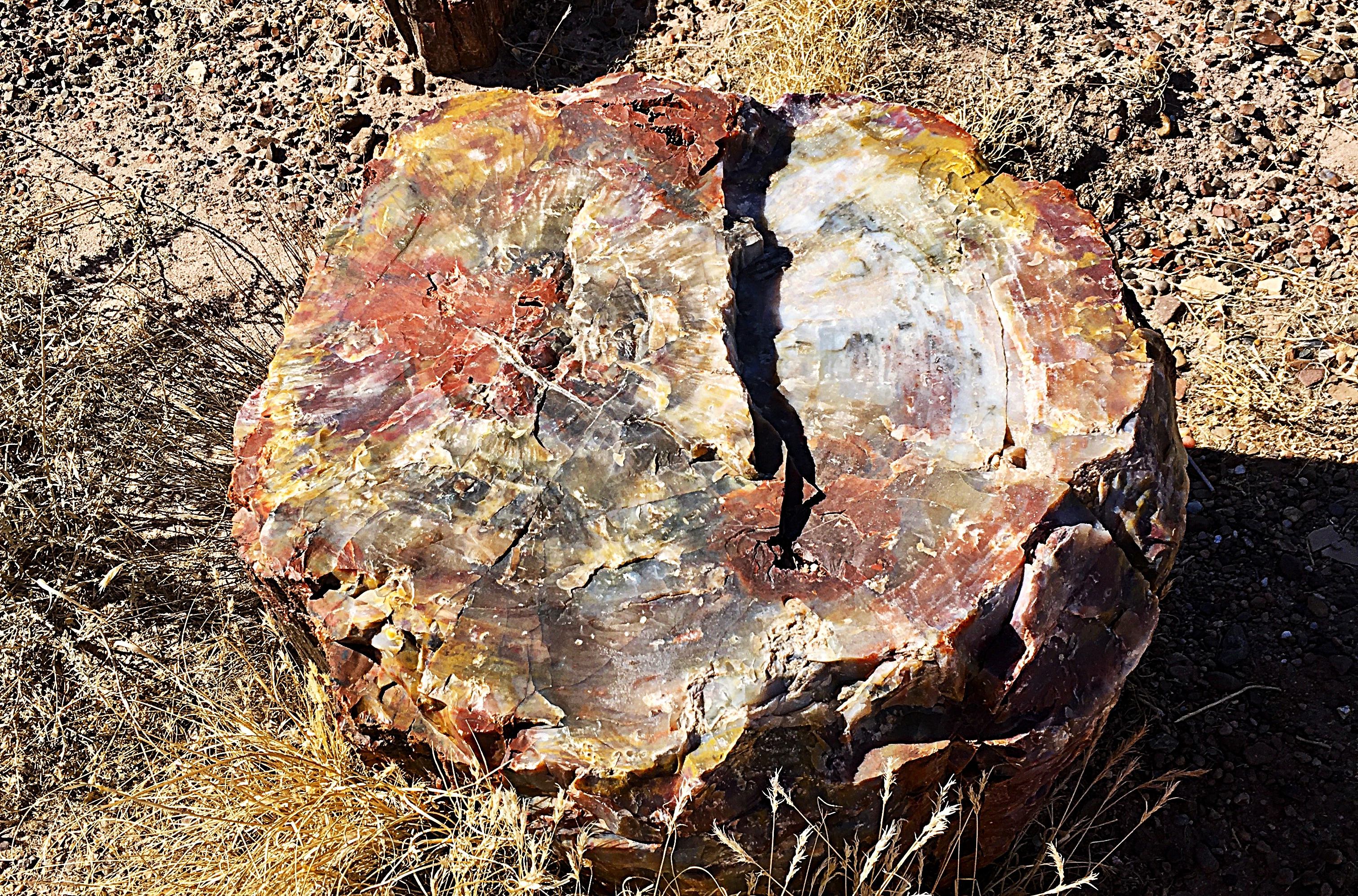
Some of the most notable arrivals on the Triassic scene were the dinosaurs and pterosaurs, both archosaurs in the clade avemetatarsalia (“bird ankles”). Pterosaurs were the first vertebrates capable of powered flight, and they evolved from a dinosaur-like ancestor, similar to the Scottish Scleromochlus, but their transition from terrestrial to aerial animals is virtually absent from the fossil record. Nevertheless, by about 228 million years ago, fully flight-capable pterosaurs had appeared. The dinosaurs likely appeared during the Middle or early Late Triassic, perhaps as far back 244 million years ago, but the earliest definitive dinosaurs don’t appear in the fossil record until about 233 million years ago in South America. They evolved from dinosaur-like archosaurs called dinosauromorphs, which included small insectivores like Lagosuchus, and the herbivorous and omnivorous silesaurids, whose relationship to dinosaurs is still being figured out. When dinosaurs first appeared, they were only a small part of their ecosystems and were often small in body size. But as the Late Triassic carried on, they began to become more numerous and began to get larger. However, dinosaurs did not become the dominant clade of terrestrial vertebrates until the extinction of many other groups of reptiles and synapsids in the End Triassic Extinction.
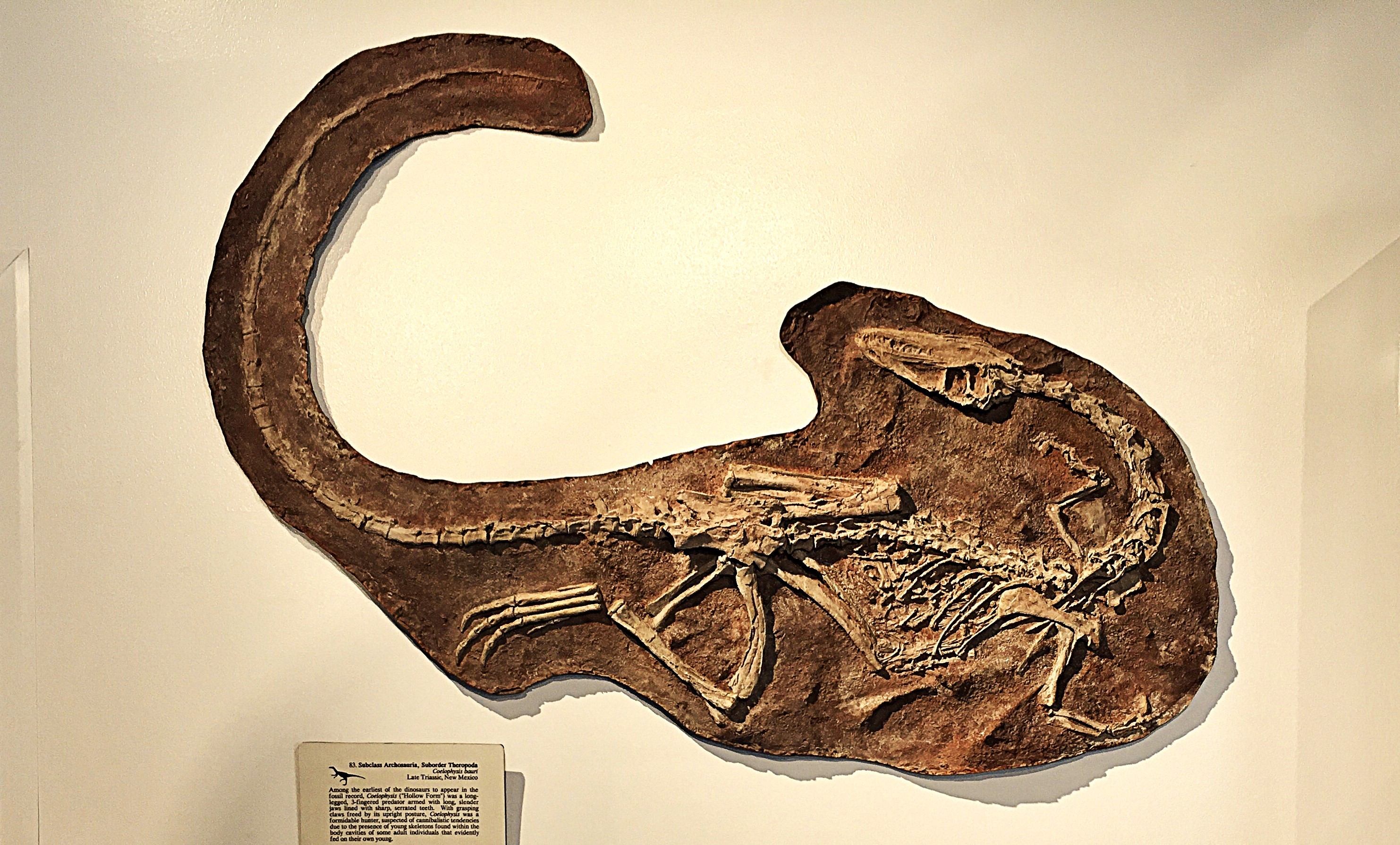
What ended the Triassic?
The Triassic Period ended much the same way it began, with a volcanically induced mass-extinction, this time caused by the eruption of the Central Atlantic Magmatic Province (CAMP), which began the breakup of Pangea and would eventually form the Atlantic Ocean. Carbon dioxide released by the CAMP eruptions led to a rapid increase in temperature at the end of the Triassic. This exacerbated an already harsh and seasonal climate, and for many animals, it was too much. Around 70-75% of all species went extinct at the end of Triassic. Among them were all remaining synapsids except for a few lineages of cynodonts and all archosaurs except for dinosaurs, pterosaurs, and crocodylomorphs, as well as many other reptiles and amphibians, including many of the stranger Triassic varieties. While life as a whole was negatively impacted, one group which thrived during the Triassic extinction was the dinosaurs, possibly due to a combination of factors including their more efficient bird-like respiratory systems, their less water-wasteful excretory systems, their highly efficient locomotion, and endothermy (warm-bloodedness). The extinction merely removed the dinosaurs’ competition, leaving them poised to take over as the dominant terrestrial animals in the Jurassic, and kicking off the true Age of Dinosaurs.
Triassic Animal List
Want to learn more about specific Triassic animals? Here’s a list of all the Triassic animal bios on our website!